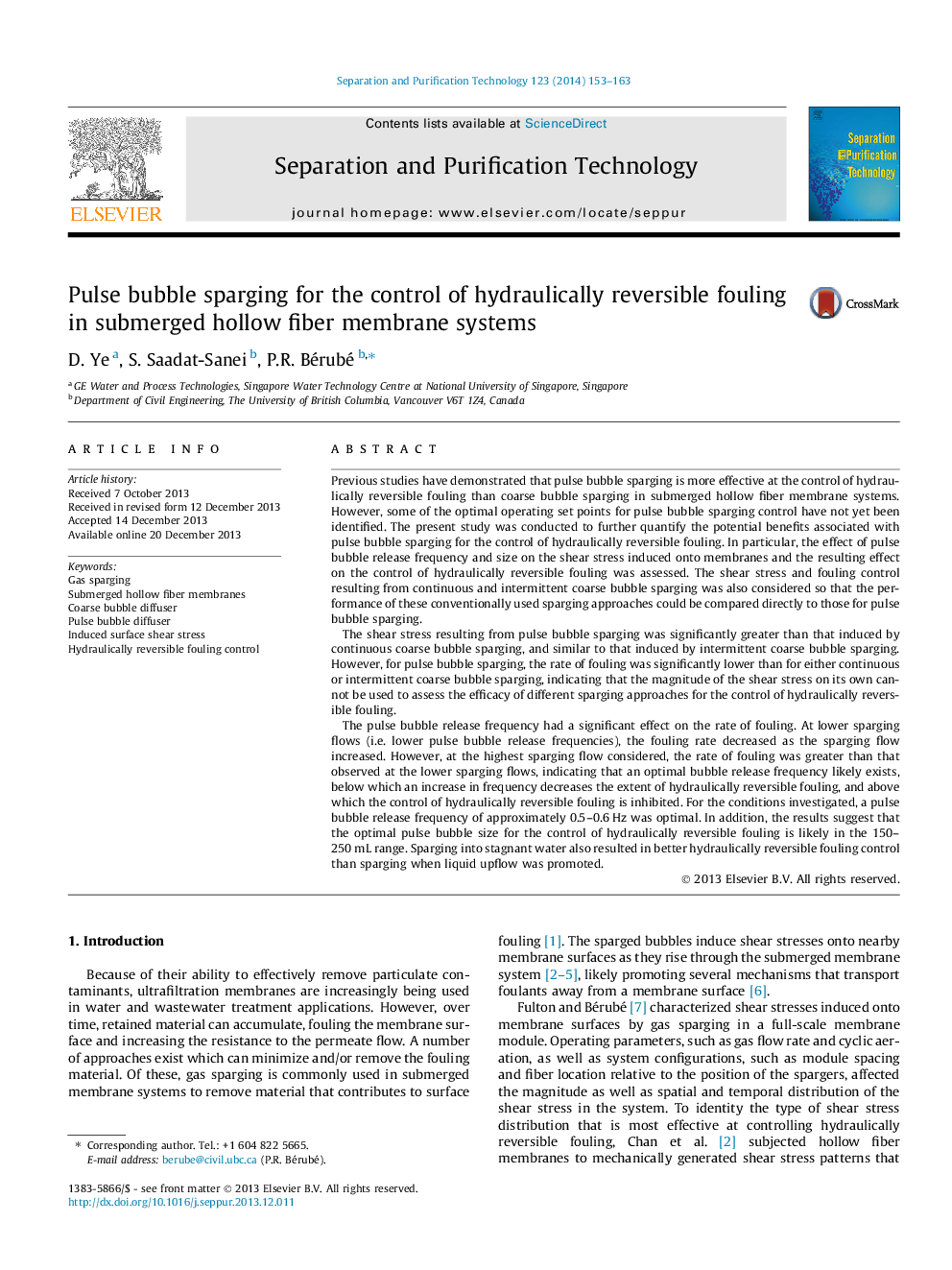| Article ID | Journal | Published Year | Pages | File Type |
|---|---|---|---|---|
| 641390 | Separation and Purification Technology | 2014 | 11 Pages |
•We further quantify the potential benefits of pulse sparging for fouling control.•Shear stress magnitude cannot be used to assess the efficacy of fouling control.•The pulse bubble release frequency had a significant effect on the rate of fouling.•A pulse bubble release frequency of approximately 0.5–0.6 Hz was optimal.•Optimal pulse bubble size for fouling control is likely in the 150–250 mL range.
Previous studies have demonstrated that pulse bubble sparging is more effective at the control of hydraulically reversible fouling than coarse bubble sparging in submerged hollow fiber membrane systems. However, some of the optimal operating set points for pulse bubble sparging control have not yet been identified. The present study was conducted to further quantify the potential benefits associated with pulse bubble sparging for the control of hydraulically reversible fouling. In particular, the effect of pulse bubble release frequency and size on the shear stress induced onto membranes and the resulting effect on the control of hydraulically reversible fouling was assessed. The shear stress and fouling control resulting from continuous and intermittent coarse bubble sparging was also considered so that the performance of these conventionally used sparging approaches could be compared directly to those for pulse bubble sparging.The shear stress resulting from pulse bubble sparging was significantly greater than that induced by continuous coarse bubble sparging, and similar to that induced by intermittent coarse bubble sparging. However, for pulse bubble sparging, the rate of fouling was significantly lower than for either continuous or intermittent coarse bubble sparging, indicating that the magnitude of the shear stress on its own cannot be used to assess the efficacy of different sparging approaches for the control of hydraulically reversible fouling.The pulse bubble release frequency had a significant effect on the rate of fouling. At lower sparging flows (i.e. lower pulse bubble release frequencies), the fouling rate decreased as the sparging flow increased. However, at the highest sparging flow considered, the rate of fouling was greater than that observed at the lower sparging flows, indicating that an optimal bubble release frequency likely exists, below which an increase in frequency decreases the extent of hydraulically reversible fouling, and above which the control of hydraulically reversible fouling is inhibited. For the conditions investigated, a pulse bubble release frequency of approximately 0.5–0.6 Hz was optimal. In addition, the results suggest that the optimal pulse bubble size for the control of hydraulically reversible fouling is likely in the 150–250 mL range. Sparging into stagnant water also resulted in better hydraulically reversible fouling control than sparging when liquid upflow was promoted.
